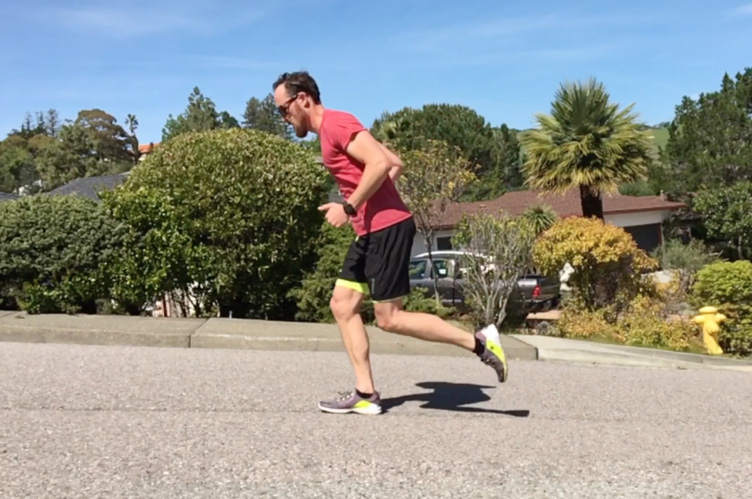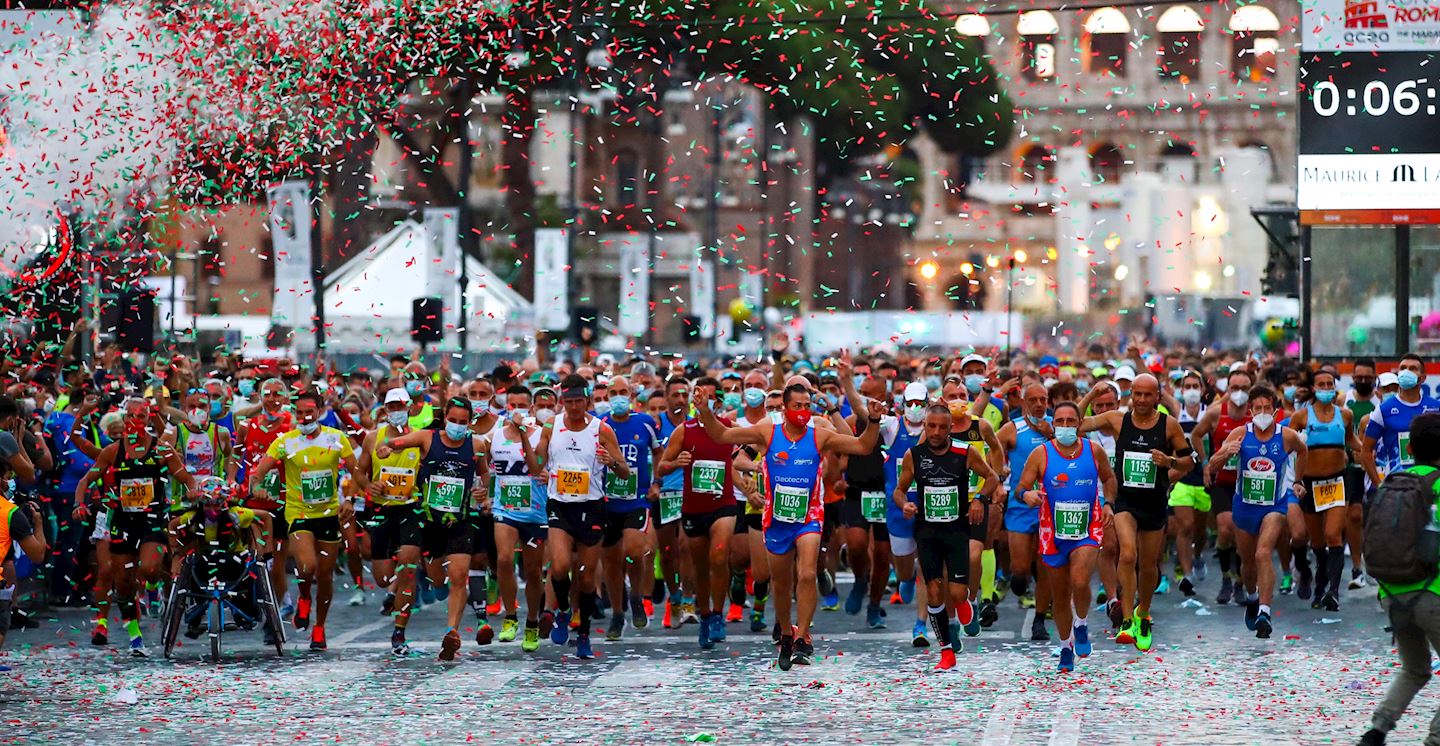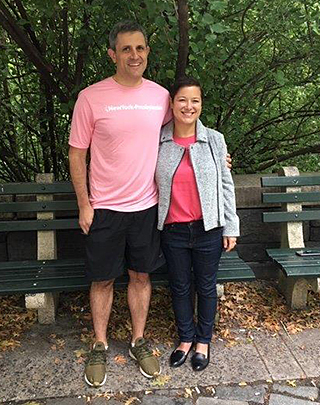ØŠŲ ØąÛŲا؊ ØŊŲÛØŊŲ ØŊØą ØīÛØĻ
 ŲŲØŠÛ ØĻØąØ§Û Ø§ŲŲÛŲ ØĻØ§Øą ØīØąŲØđ ØĻŲ ØŊŲÛØŊŲ Ų
ÛâÚĐŲÛØŊØ ÚĐØ§Øą ØģØŪØŠÛ ØŊØą ŲūÛØī ØŊØ§ØąÛØŊ. ØĻØģÛØ§Øą ØģŲÚŊÛŲ ŲŲØģ Ų
ÛâÚĐØīÛØŊ Ų Ų
ØšØē؊اŲ ŲØąÛاØŊ Ų
ÛâÚĐØīØŊ ÚĐŲ ØĻØģ ÚĐŲÛØŊ.
ŲŲØŠÛ ØĻØąØ§Û Ø§ŲŲÛŲ ØĻØ§Øą ØīØąŲØđ ØĻŲ ØŊŲÛØŊŲ Ų
ÛâÚĐŲÛØŊØ ÚĐØ§Øą ØģØŪØŠÛ ØŊØą ŲūÛØī ØŊØ§ØąÛØŊ. ØĻØģÛØ§Øą ØģŲÚŊÛŲ ŲŲØģ Ų
ÛâÚĐØīÛØŊ Ų Ų
ØšØē؊اŲ ŲØąÛاØŊ Ų
ÛâÚĐØīØŊ ÚĐŲ ØĻØģ ÚĐŲÛØŊ.
ŲŲÛ Ø§ÚŊØą ØĻŲ ØĒŲ ŲūاÛØĻŲØŊ ØĻاØīÛØŊØ Ø·ŲŲÛ ŲØŪŲاŲØŊ ÚĐØīÛØŊ ÚĐŲ ØĻØŠŲاŲÛØŊ ŲŲÚŊاŲ ØŊŲÛØŊŲ ØĻا ŲŲ ØąØ§ŲاŲ ØŪŲØŊ ÚŊŲū ŲŲ ØĻØēŲÛØŊ.
ØŊØą اÛŲ ŲŲØ·ŲØ Ų ØąØĻÛاŲ Ų ÛâØŊاŲŲØŊ ÚĐŲ ØīŲ ا ØĻاÛØŊ ÛÚĐ ÚاŲØī ØŽØŊÛØŊ ØĻØąØ§Û ØŪŲØŊ؊اŲ اÛ؎اØŊ ÚĐŲÛØŊØ ØŊØą ØšÛØą اÛŲ ØĩŲØąØŠ ŲūÛØīØąŲØŠ ØĻØŊŲÛ ØīŲ ا ÚĐŲØŊ ØŪŲاŲØŊ ØīØŊ. اÛŲ؎اØģØŠ ÚĐŲ ØŠŲ ØąÛŲ ØŊØą ØīÛØĻ Ų Ø·ØąØ Ų ÛâØīŲØŊ. اÛŲ ØĻŲØŠØąÛŲ ÚاŲØīÛØģØŠ ÚĐŲ ØĻØđØŊ اØē اÛ؎اØŊ ØĻÛØģ ØģŲØĻÚĐ ØŊŲÛØŊŲ ØŪŲØŊ Ų ÛâØŠŲاŲÛØŊ ØŊاØīØŠŲ ØĻاØīÛØŊ.
ØĻŲ ŲŲ ÛŲ ØŊŲÛŲ اØģØŠ ÚĐŲ ØīŲ ا ÛÚĐ ØĻØąŲاŲ Ų ØŊŲÛØŊŲ ØŊØą ØīÛØĻ ØąØ§ ØŊØą ØĻØŪØīÛ Ø§Øē ØŠŲاŲÛ ØĻØąŲاŲ ŲâŲØ§Û Ų Ų ØĻØąØ§Û Ø§Û؎اØŊ ÛÚĐ ÚØąØŪŲ ØĒŲ ŲØēØīÛ ÚĐاŲ Ų Ų ØīاŲØŊŲ Ų ÛâÚĐŲÛØŊ.
ŲŲاÛØŊ ØŊŲÛØŊŲ ØŊØą ØīÛØĻ:
ØĻا ØŠŲ ØąÛŲ ÚĐØąØŊŲ ØŊØą ØŠŲūŲ ØīŲ ا Ų ÛâØŠŲاŲÛØŊ:
- VO2max ØŪŲØŊ ØąØ§ ØŠŲŲÛØŠ ÚĐŲÛØŊ
- ØĻŲØŠØąŲ ØĻا ØŠØŽŲ Øđ اØģÛØŊ ŲاÚĐØŠÛÚĐ Ų ŲاØĻŲŲ ÚĐŲÛØŊ
- ØđŲ ŲÚĐØąØŊ ŲūاŲا ØąØ§ ØĻŲØĻŲØŊ ØĻØŪØīÛØŊ
- ØŠŲ ØąÛŲا؊ اŲŲØąØŠ ØĻÛØģ (ØģØŪØŠÛ Ų ØŲØą) ØąØ§ ØĻÛاŲ ŲØēÛØŊ ØēÛØąØ§ ØŊØą ØŠŲ ØąÛŲا؊ ØīÛØĻ اŲŲØąØŠÂ Ų ŲŲ âØŠØą اØē ØģØąØđØŠ Ûا ØķØąØĻاŲ ŲŲØĻ اØģØŠ
- ØģØąØģØŪØŠÛ Ø°ŲŲÛ ØĻÛØīØŠØąÛ Ø§Û؎اØŊ ÚĐŲÛØŊ
- ØĻÛâØŲØĩŲÚŊÛ ŲاØīÛ Ø§Øē ÛÚĐŲŲاØŪØŠÛ ØŊŲÛØŊŲ ØąØ§ اØē ØĻÛŲ ØĻØĻØąÛØŊ
Ų ØđØēÛØēاŲ Ų Ų اÛŲ ØąŲŲØŽ ÚŊØģØŠØąØŊŲâØ§Û Ø§Øē ŲūÛØīØąŲØŠ ØĻØąØ§Û ÛÚĐ ØŊŲŲØŊŲ اØģØŠ. ØĻŲ ØēØŲ ØŠØī Ų ÛâØ§ØąØēØŊ.

ØŊŲÛØŊŲ ØŊØą ØīÛØĻ ØĻØģØŠŲ ØĻŲ ŲØŲŲâÛ ØŠŲ ØąÛŲ ÚĐØąØŊŲ ŲØą ØŊŲŲØŊŲ Ų Ų ØąØĻÛ Ų ÛââØŠŲاŲØŊ Ų ØŠŲاŲØŠ ØĻاØīØŊ. اÚĐØŦØą Ų ØąØĻÛاŲ ŲŲ Ų ØŦŲ Ų Ų اØē ØŠŲ ØąÛŲا؊ ØīÛØĻ ØĻŲ ÚŲØ§Øą ØąŲØī ÚĐŲÛØŊÛ Ø§ØģØŠŲاØŊŲ Ų ÛâÚĐŲŲØŊ:
- Ų ŲØŊŲ ŲâØ§Û ØĻØą ØŊŲÛØŊŲ ØģØąÛØđØŠØą ØĻØąØ§Û ØŊŲŲØŊÚŊاŲ ؊اØēŲ ÚĐØ§Øą
- ØĻŲ ØđŲŲاŲ ÛÚĐ Ų ØąØŲŲ ØŠŲ ØąÛŲÛ ŲØĻŲ اØē ØīØąŲØđ ÚĐØ§Øą ØģØąØđØŠÛ
- ØĻŲ ØđŲŲاŲ ÛÚĐ ØŠŲ ØąÛŲ ØŠØŪØĩØĩÛ ØŊØą ÛÚĐ ØĻØąŲاŲ Ų ØŠŲ ØąÛŲÛ ØĻØąØ§Û ØĒŲ اØŊŲ ØīØŊŲ ØĻØąØ§Û ÛÚĐ Ų ØģÛØą Ų ØģاØĻŲŲ ŲūØą ØīÛØĻ
- ØĻŲ ØđŲŲاŲ ØąØ§ŲÛ ØĻØąØ§Û ØŠŲŲÛØŠ ØŠŲاØģØĻ اŲØŊاŲ ØĻØą Ų ØĻŲØ§Û ØŠŲ ØąÛŲا؊ اŲŲØąØŠ ØĻÛØģ (ØŠŲاØī Ų ØŲØą)
ØĻŲØŠØąÛŲ اŲŲاØđ ØŠŲ ØąÛŲا؊ ØŊØą ØīÛØĻ
ØģØŠâŲØ§Û ØīÛØĻâŲØ§Û Ø·ŲŲاŲÛ (ŲاŲÚŊ ŲÛŲ)
ØīÛØĻâŲØ§Û Ø·ŲŲاŲÛ ØŊØą ÛÚĐ ØīÛØĻ ØŠØŊØąÛØŽÛ Ø§Ų؎اŲ
Ų
ÛâØīŲØŊ Ų ØØŊŲØŊ ØŊŲ ؊ا ØģŲ ØŊŲÛŲŲ Ø·ŲŲ Ų
ÛâÚĐØīØŊ.
ØīŲ
ا ØĻا ÚĐŲØīØīÛ ŲØģØĻ؊ا ØĻاŲا Ų
ÛâØŊŲÛØŊ (ØĻاÛØŊ ØØģ ØŊŲÛØŊŲ 10K ØąØ§ ØŊاØīØŠŲ ØĻاØīÛØŊ). ØŊØą ØĻاŲØ§Ø ØŊŲØą Ų
ÛâØēŲÛØŊ Ų ŲØĻŲ اØē ØīØąŲØđ ØŊŲØĻØ§ØąŲ ØĻŲ ØĒØąØ§Ų
Û ØĻŲ ŲūاÛÛŲ ØŠŲūŲ Ų
ÛâØŊŲÛØŊ.
اÚĐØŦØą ØŊŲŲØŊÚŊاŲ Ų
ØŠŲØŽŲ Ų
ÛâØīŲŲØŊ ÚĐŲ ÚŲØ§Øą ؊ا ŲØīØŠ ØģØŠ ØĻØąØ§Û ÛÚĐ ØŠŲ
ØąÛŲ Ø·ŲŲاŲÛ ØŊØą ØīÛØĻ Ų
Ø·ŲŲØĻ اØģØŠ.
ŲØą اØē ÚŊاŲÛ ØŊØą ØīÛØĻâŲØ§Û Ų ŲŲÛ ØģØąØđØŠ ØŪŲØŊ ØąØ§ اŲØēاÛØī ØŊŲÛØŊ ؊ا ØĻŲØŠØąÛŲ ØŠÚĐŲÛÚĐ ØģØąØ§ØīÛØĻÛ ØŪŲØŊ ØąØ§ ŲūÛØŊا ÚĐŲÛØŊ. اÛŲÚŊŲŲŲ ØģØąÛØđâØŠØą ØŊŲÛØŊŲ ØŊØą ØīÛØĻâŲØ§Û Ų ŲŲÛ ØąØ§ ØēÛاØŊ اŲ؎اŲ ŲØŊŲÛØŊØ ŲŲØ· ØŊØą ØŊŲØēŲØ§Û ÚĐŲ Ø ØŊŲÛØŊŲ ØŊØą ØīÛØĻâŲØ§Û Ų ŲŲÛ ØĻŲ ØīŲ ا ÚĐŲ ÚĐ Ų ÛâÚĐŲØŊ ØĻŲØŠØąÛŲ ØŠÚĐŲÛÚĐ ØŪŲØŊ ØąØ§ ŲūÛØŊا ÚĐŲÛØŊ.

Note: ØŠŲ
ØąÛŲا؊ ØŊØą ØīÛØĻ ØĻØą ŲūاÛŲ اŲŲØąØŠ ØĻÛØģ (ØŠŲاØī Ų
ØŲØą) ŲØģØŠŲØŊ Ų ŲŲ ØĻØą ŲūاÛŲ ØģØąØđØŠ (ŲÛØŊÛŲ ØŊØą اÛŲ؎ا). ØīŲ
ا ØŊØą ØģØąØĻاŲاÛÛ ØĒŲØģØŠŲâØŠØą Ų
ÛâØŊŲÛØŊØ Ø§Ų
ا Ų
ØđÛØ§Øą اØĩŲÛ Ø§ÛŲ اØģØŠ ÚĐŲ ØĻاÛØŊ ØŠŲاØī؊اŲ Ų
اŲŲØŊ ÛÚĐ Ų
ØģاØĻŲŲ Ų
ØīØŪØĩ ØĻاØīØŊ.
ØĻŲ ØđŲŲاŲ Ų
ØŦاŲØ ØŊØą ØīÛØĻ Ø·ŲŲاŲÛ Ø§ØīØ§ØąŲ ØīØŊŲ ØŊØą ØĻاŲØ§Ø ØŠŲ
ØąÛŲا؊ ØģØŪØŠÛ Ų
ØŲØą Ų
ØģاØĻŲŲ 10K ŲاØēŲ
اØģØŠ ŲŲ ØģØąØđØŠ Ų
ØģاØĻŲŲ 10K.
ØąŲÛ ŲØąŲ
ØŪŲØĻ ØĻا ŲūŲØīâØĒŲ ŲØŊØąØŠÛ Ų ÚØąØŪØī ŲØŊØąØŠÛ ØĻاØēŲ ØŠŲ
ØąÚĐØē ÚĐŲÛØŊ. ØĻØąØ§Û ØąÛÚĐاŲØąÛ ÚĐØąØŊŲ ØīÛØĻ ØąØ§ ØĻŲ ØĒØąØ§Ų
Û ŲūاÛÛŲ ØĻØŊŲÛØŊ.
ŲŲ
ÚŲÛŲ Ų
ÛâØŠŲاŲÛØŊ ØĻا ØŊŲÛØŊŲ ØŊØą ØģØąØđØŠ 10KØ ØŠÚĐŲÛÚĐ ØŊŲÛØŊŲ ØŊØą ØīÛØĻ Ų
ŲŲÛ ØŪŲØŊ ØąØ§ ØŠŲ
ØąÛŲ ÚĐŲÛØŊ. ØĻØŊŲ ØŪŲØŊ ØąØ§ ØŠØØŠ ÚĐŲØŠØąŲ ŲÚŊŲ ØŊØ§ØąÛØŊ Ų اÛŲ ŲūاÛÛŲ ØĒŲ
ØŊŲâŲا ØąØ§ ØĻŲ ØŠØŊØąÛØŽ اØķاŲŲ ÚĐŲÛØŊ ØēÛØąØ§ اØØŠŲ
اŲاŲ ØĒØŪØą ÚĐØ§Øą ØŊØąØŊ ØŪŲاŲÛØŊ ØŊاØīØŠ.

ØģØŠâŲØ§Û ØīÛØĻâŲØ§Û Ų ØŠŲØģØ· (Ų ØŊÛŲŲ ŲÛŲ)
ØīÛØĻâŲØ§Û Ų ØŠŲØģØ· ØŊØą ØģØąØ§ØēÛØąÛâŲØ§Û ŲØģØĻ؊اŲ ØŠŲØŊ اŲ؎اŲ Ų ÛâØīŲØŊ Ų 45 ؊ا 60 ØŦاŲÛŲ Ø·ŲŲ Ų ÛâÚĐØīØŊ. ØŠŲ ØąÛŲا؊ اŲŲØąØŠ ØĻÛØģ (ØŠŲاØī Ų ØŲØą) ØŊØą ØĒŲ “ØģØŪØŠ” اØģØŠ Ų ØĻØąØ§Û Ø§ÚĐØŦØą ØŊŲŲØŊÚŊاŲ ØØŊŲØŊا ØĻا Ų ØģاØĻŲŲ 5K ØĻØąØ§ØĻØąÛ Ų ÛâÚĐŲØŊ. Ų اŲŲØŊ ØīÛØĻâŲØ§Û Ø·ŲŲاŲÛØ ØēŲ اŲÛ ÚĐŲ ØĻŲ ØĻاŲا ØŊØģØŠ ØąØģÛØŊÛØŊØ ØĻŲ ØģاØŊÚŊÛ Ų ÛâÚØąØŪÛØŊ Ų ŲØĻŲ اØē ØīØąŲØđ ØģØŠ ØĻØđØŊÛØ ØĻØąØ§Û ØąÛÚĐاŲØąÛ ÚĐØąØŊŲ ØīÛØĻ ØąØ§ ØĻŲ ØĒØąØ§Ų Û ŲūاÛÛŲ Ų ÛâØŊŲÛØŊ. ŲØīØŠ ؊ا 12 ØģØŠ ØĻØąØ§Û ØīÛØĻâŲØ§Û Ų ØŠØđØŊŲ ØŪŲØĻ اØģØŠ.
 Note: ØĻØąØŪÛ Ø§Øē ØŊŲŲØŊÚŊاŲ ØĻŲ ØŠŲ
ØąÛŲا؊ Ų
ØĻØŠŲÛ ØĻØą اŲŲØąØŠ ØĻÛØģ (ØģØŪØŠÛ Ų
ØŲØą) ØđاØŊØŠ ŲØŊØ§ØąŲØŊØ ØĻŲاØĻØąØ§ÛŲ ØŊØą اÛŲ؎ا ŲØīاŲ Ų
ÛâØŊŲÛŲ
ÚĐŲ ØŠŲ
ØąÛŲ ØŊØą ØīÛØĻ ÚŲ ØØģŲÛ ØŊØ§ØąØŊ. ØĻÛاÛÛØŊ اØē ØģØŠâŲØ§Û ØīÛØĻ Ų
ØŠŲØģØ· ØĻŲ ØđŲŲاŲ Ų
ØŦاŲ اØģØŠŲاØŊŲ ÚĐŲÛŲ
. اÛŲ ØŠŲ
ØąÛŲ ØĻاÛØŊ ØØģÛ ØīØĻÛŲ ØĻŲ 5K ØŊاØīØŠŲ ØĻاØīØŊØ ØĻŲاØĻØąØ§ÛŲ ÚŲØŊ ØģØŠ اŲŲ ØĻاÛØŊ ØīØĻÛŲ ÚĐÛŲŲŲ
ØŠØąŲØ§Û Ø§ŲŲÛŲ 5K ØĻاØīØŊ – ØģØąÛØđ اŲ
ا ÚĐŲØŠØąŲ ØīØŊŲ Ų Ų
ÛâØŠŲاŲÛØŊ ŲŲØģ ØŪŲØŊ ØąØ§ ØŊØą ØīÛØĻ Ų
ŲŲÛ Ų ŲŲÚŊاŲ
ŲØąŲ
ØŊŲÛ ØąÛÚĐاŲØąÛ ØĻاØēÛاØĻÛ ÚĐŲÛØŊ.
Note: ØĻØąØŪÛ Ø§Øē ØŊŲŲØŊÚŊاŲ ØĻŲ ØŠŲ
ØąÛŲا؊ Ų
ØĻØŠŲÛ ØĻØą اŲŲØąØŠ ØĻÛØģ (ØģØŪØŠÛ Ų
ØŲØą) ØđاØŊØŠ ŲØŊØ§ØąŲØŊØ ØĻŲاØĻØąØ§ÛŲ ØŊØą اÛŲ؎ا ŲØīاŲ Ų
ÛâØŊŲÛŲ
ÚĐŲ ØŠŲ
ØąÛŲ ØŊØą ØīÛØĻ ÚŲ ØØģŲÛ ØŊØ§ØąØŊ. ØĻÛاÛÛØŊ اØē ØģØŠâŲØ§Û ØīÛØĻ Ų
ØŠŲØģØ· ØĻŲ ØđŲŲاŲ Ų
ØŦاŲ اØģØŠŲاØŊŲ ÚĐŲÛŲ
. اÛŲ ØŠŲ
ØąÛŲ ØĻاÛØŊ ØØģÛ ØīØĻÛŲ ØĻŲ 5K ØŊاØīØŠŲ ØĻاØīØŊØ ØĻŲاØĻØąØ§ÛŲ ÚŲØŊ ØģØŠ اŲŲ ØĻاÛØŊ ØīØĻÛŲ ÚĐÛŲŲŲ
ØŠØąŲØ§Û Ø§ŲŲÛŲ 5K ØĻاØīØŊ – ØģØąÛØđ اŲ
ا ÚĐŲØŠØąŲ ØīØŊŲ Ų Ų
ÛâØŠŲاŲÛØŊ ŲŲØģ ØŪŲØŊ ØąØ§ ØŊØą ØīÛØĻ Ų
ŲŲÛ Ų ŲŲÚŊاŲ
ŲØąŲ
ØŊŲÛ ØąÛÚĐاŲØąÛ ØĻاØēÛاØĻÛ ÚĐŲÛØŊ.
ØģØŠâŲØ§Û Ų ÛاŲÛ ØĻاÛØŊ Ų اŲŲØŊ ÚĐÛŲŲŲ ØŠØąŲØ§Û ŲØģØ· ÛÚĐ 5K اØØģاØģ ØīŲØŊ – ØģØŪØŠ ØīØŊŲØ ØŠŲŲØģ ØģØŪØŠØ ŲūاŲا اØØģاØģ ØģŲÚŊÛŲÛ Ų ÛâÚĐŲŲØŊ Ų ØąÛÚĐاŲØąÛ ØŊØą ØģØąØ§ØīÛØĻÛ ØģØŪØŠ ØŠØą Ų ÛâØīŲØŊ. ØģØŠâŲØ§Û ØĒØŪØą ØĻاÛØŊ ØīØĻÛŲ ØĒØŪØąÛŲ ÚĐÛŲŲŲ ØŠØąŲØ§Û 5K ØĻاØīØŊ â ŲÛاØē ŲØģØŠ ØĻŲ ØŠŲ ØąÚĐØē Ø°ŲŲÛ ØĻاŲا ØĻØąØ§Û Ø§ØŊاŲ Ų ØŊاØŊŲ Ų ØŽŲŲÚŊÛØąÛ Ø§Øē اØē ŲŲ ÚŊØģÛØŪØŠÚŊÛ ŲØąŲ ؊اŲ. ŲŲØģ ØīŲ ا ØĻØģÛØ§Øą ØģŲÚŊÛŲ اØģØŠ Ų Ų Ų ÚĐŲ اØģØŠ ŲØĻŲ اØē ŲūاÛÛŲ ØŊŲÛØŊŲ ØģØąØ§ØīÛØĻÛ ØĻŲ ÚŲØŊ ØŦاŲÛŲ اØģØŠØąØ§ØØŠ ŲÛاØē ØŊاØīØŠŲ ØĻاØīÛØŊ.
ØģØŠâŲØ§Û ØīÛØĻâŲØ§Û ØŠŲØŊ (اØģØŠÛŲū ŲÛŲ)
ŲŲ
اŲØ·ŲØą ÚĐŲ اØē ŲاŲ
ØĒŲ ŲūÛØŊاØģØŠØ ØŠŲ
ØąÛŲا؊ ØīÛØĻâŲØ§Û ØŠŲØŊ ØĻØą ØąŲÛ ØīÛØĻâŲØ§Û ØŠŲØŊ Ø§ØŽØąØ§ Ų
ÛâØīŲŲØŊ. ØĻا اÛŲ ØاŲØ ØĒŲŲا ØŠŲŲا 10 ؊ا 15 ØŦاŲÛŲ Ø·ŲŲ Ų
ÛâÚĐØīŲØŊØ ØĻŲاØĻØąØ§ÛŲ ØģØąÛØđ ØĻا ŲūاÛاŲ Ų
ÛâØąØģŲØŊ. اØē ØĒŲ؎اÛÛ ÚĐŲ ÚĐŲ؊اŲ Ų ØĻا ØīÛØĻ ØŠŲØŊ ŲØģØŠŲØŊØ Ø§ŲŲØąØŠ اÛŲ ØŠŲ
ØąÛŲا؊ ØĻØģÛØ§Øą ØēÛاØŊ Ų ØģØŪØŠ ŲØģØŠŲØŊ. (ŲØēØŊÛÚĐ Ø§ŲŲØąØŠ ØŊŲÛØŊŲ ØĻØąØ§Û ØąÚĐŲØąØŊ ÛÚĐ Ų
اÛŲ).

اÛØŊŲ ŲūØīØŠ ØģØŠâŲØ§Û Ø§ÛŲ ØīÛØĻâŲØ§Û ØĻØģÛØ§Øą ÚĐŲ؊اŲ Ų ØŠŲØŊ اÛŲ اØģØŠ ÚĐŲ ØīŲ
ا ØĻŲ ŲØŊØąØŠ ØØŊاÚĐØŦØą ŲØŊØąØŠ ØđØķŲاŲÛ ØŪŲØŊ ØŊØą ØÛŲ ØŊŲÛØŊŲ ØĻŲ اØģØŠŲاØŊŲ Ų
ÛâÚĐŲÛØŊ (ØØŠÛ ŲŲÚŊاŲ
ØŊŲÛØŊŲ ØģØąØđØŠÛ) ØĻŲاØĻØąØ§ÛŲ اÛŲ ØŠŲ
ØąÛŲا؊ ØĻا ÚĐŲ
ÚĐ ÚĐØąØŊŲ ØĻŲ ØŠŲŲÛØŠ ØĻÚĐØ§ØąÚŊÛØąÛ ÚĐاŲ
Ų اØē ØąØīØŠŲâŲØ§Û ØđØķŲاŲÛØ Ø§ØØŠŲ
اŲا ØĻŲ ØĻŲØĻŲØŊ ØđŲ
ŲÚĐØąØŊ Ų ŲūÛØīÚŊÛØąÛ Ø§Øē ØĒØģÛØĻ ŲÛØē ÚĐŲ
ÚĐ Ų
ÛâÚĐŲŲØŊ.
ŲūÛØģØŠ ØīÛØĻâØŊØ§Øą (ŲÛŲ ØģÛØąÚĐØŠØģ)
ŲŲØđ Ų ŲØąØŊ ØđŲاŲŲ Ų Ų اØē ØŠŲ ØąÛŲا؊ ØīÛØĻØ ŲūÛØģØŠâŲØ§Û ØīÛØĻâØŊØ§Øą ŲØģØŠŲØŊ. اÛŲ ØŠŲ ØąÛŲ ØŠŲØģØ· Ų ØąØĻÛ Ų ŲØ ØĒØąØŠŲØą ŲÛØŊÛØ§ØąØŊØ ØđŲ ŲŲ ÛØŠ ŲūÛØŊا ÚĐØąØŊØ ØĻŲاØĻØąØ§ÛŲ Ų Ų ØĻŲ Ø·ŲØą Ø·ØĻÛØđÛ ØĻŲ ØĒŲ ØđŲاŲŲ ØŊØ§ØąŲ . ØŊØą ŲūÛØģØŠ ØīÛØĻØ ØīŲ ا ŲŲ ØŠŲŲا Ų اŲŲØŊ ØģاÛØą ØŠŲ ØąÛŲا؊ ØŊØą ØīÛØĻ Ų ÛâØŊŲÛØŊØ ØĻŲÚĐŲ ØđŲاØĩØą ØŊÛÚŊØąÛ ØąØ§ ŲÛØē ØŊØą ØģØąØ§ØģØą Ų ØģÛØą ŲūÛØģØŠ ŲØąØ§Øą ØŊØą ŲØļØą Ų ÛâÚŊÛØąÛØŊ.

ØŊØą ŲūÛØģØŠ ØīÛØĻâØŊØ§Øą Ų
ØđØąŲŲ ŲÛØŊÛØ§ØąØŊØ ØŊŲŲØŊÚŊاŲ ØīÛØĻâŲØ§Û Ų
ØŠŲØģØ· ØąØ§ ŲØŊØąØŠÛ Ų
ÛâØŊŲÛØŊŲØŊ Ų ØģŲūØģ ØŊØą ØĻاŲØ§Û ØīÛØĻ اØģØŠØąØ§ØØŠ Ų
ÛâÚĐŲŲØŊ. ŲūØģ اØē ØąÛÚĐاŲØąÛ Ų ŲØĻŲ اØē ØŊŲÛØŊŲ ØīÛØĻ Ų
ŲŲÛØ ØĒŲŲا ÚŲØŊÛŲ ÚŊاŲ
ØģØąØđØŠÛ ÚĐŲ؊اŲ ØĻØąØ§Û Ø§ŲØēاÛØī ØģØąØđØŠ Ųūا ØĻØąŲ
ÛØŊØ§ØąŲØŊ. ØēŲ
اŲÛ ÚĐŲ ØĻŲ ŲūاÛÛŲ ØąØģÛØŊŲØŊØ ŲØĻŲ اØē اØģØŠØąØ§ÛØŊ ŲØ§Û ØĻÛØīØŠØą ØŊŲØĻØ§ØąŲ اØģØŠØąØ§ØØŠ Ų
ÛâÚĐŲŲØŊ. اÚŊØą Ų
ØģÛØąŲاÛÛ ØŊØ§ØąÛØŊ ÚĐŲ ØŊØą ØĻاŲا Ų ŲūاÛÛŲ ØģØ·Ø Â ØĩاŲ ØŊØ§ØąŲØŊØ ØŠŲØĩÛŲ Ų
ÛâÚĐŲŲ
ŲūÛØģØŠ ØīÛØĻ ŲÛØŊÛØ§ØąØŊ ØąØ§ ØŊØą ØĻØąŲاŲ
Ų ØŪŲØŊ ŲØąØ§Øą ØŊŲÛØŊ.
ØīÛØĻâŲŲØąØŊÛ Ø·ŲŲاŲÛ (ŲاŲÚŊ ŲÛŲ ÚĐŲاÛŲ ØĻ)
ØŠŲ
ØąÛŲ Ų
ØđŲ
ŲŲ ŲØąØēØīÚĐØ§ØąØ§Ų ØŊØą اŲŲÛŲ ØŠÛŲ
ØŠŲ
ØąÛŲÛ Ø§ŲŲ
ŲūÛÚĐ ÚĐŲ Ų
Ų Ų
ØąØĻÛÚŊØąÛ ÚĐØąØŊŲ
Ø ØīÛØĻâŲŲØąØŊÛ Ø§ØģØŠŲاŲ
ØŠÛ ØĻŲØŊ. ØŊØą ÚĐŲ
Ųū Ų
اŲØ Ų
ا ÛÚĐ ØīÛØĻ 20K ØŊاØīØŠÛŲ
ÚĐŲ ŲØąØēØīÚĐØ§ØąØ§Ų ŲŲØŠŲ Ø§Û ÛÚĐ ØĻØ§Øą ØĒŲ ØąØ§ Ų
ÛâØŊŲÛØŊŲØŊ. اÛŲ ÛÚĐ Ų
ØģاØĻŲŲ ŲØĻŲØŊØ ØĻŲÚĐŲ اŲŲØąØŠÛ ØĻŲØŊ ØĻØģÛØ§Øą ØīØŊÛØŊ ÚĐŲ ØĻÛØī اØē ÛÚĐ ØģاØđØŠ Ø·ŲŲ ÚĐØīÛØŊ.
اÚĐØŦØą Ų
ØąØĻÛاŲ ØŊØąÛاŲØŠŲ اŲØŊ ÚĐŲ ŲØą ØīÛØĻâŲŲØąØŊÛ Ø§ØģØŠŲاŲ
ØŠÛ ÚĐŲ ØĻÛŲ 30 ØŊŲÛŲŲ ؊ا ÛÚĐ ØģاØđØŠ Ø·ŲŲ Ų
ÛâÚĐØīØŊ ØđاŲÛ ØđŲ
Ų Ų
ÛâÚĐŲØŊ. اŲØĻØŠŲØ ØīŲ
ا ØĻاÛØŊ ØĻŲ ÚŲÛŲ Ų
ØģÛØą ØīÛØĻâØŊØ§ØąÛ ØŊØģØŠØąØģÛ ØŊاØīØŠŲ ØĻاØīÛØŊØ ØĻŲاØĻØąØ§ÛŲ اÛŲ ŲŲØđ ØŠŲ
ØąÛŲ Ų
ØđŲ
ŲŲاŲ ŲŲØ· ØĻØąØ§Û ØŊŲŲØŊÚŊاŲ ØģاÚĐŲ ØŊØą Ų
ŲاطŲ ÚĐŲŲØģ؊اŲÛ ØŊØą ØŊØģØŠØąØģ اØģØŠ.

ØŊŲ ŲūØą ØīÛØĻ (ŲÛŲÛ ØąØ§ŲØē)
اŲØĻØŠŲ ØģاØŊŲ ØŠØąÛŲ ŲŲØđ ØŠŲ ØąÛŲ ØŊØą ØīÛØĻ ØĻØąØ§Û ŲŲ Ų ØŊŲŲØŊÚŊاŲÛ ÚĐŲ ØŊØą Ų ŲاطŲÛ ØĻا ŲūØģØŠÛ ØĻŲŲØŊÛ ØēÛاØŊ ØēŲØŊÚŊÛ Ų ÛâÚĐŲŲØŊ اÛŲ اØģØŠ ÚĐŲ ŲØą اØē ÚŊاŲÛ Ø§ÛŲ ØŊØą ŲŲ ÛŲ ŲūØģØŠÛ ØĻŲŲØŊÛ Ųا ØĻØŊŲŲØŊ.
ŲŲÚŊاŲ ØŊŲÛØŊŲ ØŊØą ÛÚĐ Ų ØģÛØą ŲūØą اØē ŲūØģØŠÛ ØĻŲŲØŊÛØ ÚŊاŲا ØīÛØĻâŲØ§Û Ų ØŦØĻØŠ ØąØ§ ŲØŽŲŲ Û ØĻØŊŲÛØŊ Ų ØŊØą ØĻØąØŪÛ Ų ŲاŲØđØ ØīÛØĻâŲØ§Û Ų ŲŲÛ ØąØ§ ØģØąÛØđØŠØą ØĻØŊŲÛØŊ. ØĻا ÚŊØ°ØīØŠ ØēŲ اŲØ Ø§ÛŲ Ų Ųا؎ŲŲ Ų ÚĐØąØą ØĻا ØŊŲÛØŊŲ ØŊØą ØīÛØĻ Ų ØŦØĻØŠ Ų ØīÛØĻ Ų ŲŲÛ ØŠŲاØģØĻ اŲØŊاŲ ØīŲ ا ØąØ§ ؊ا ØØŊ ØēÛاØŊÛ ØĻŲØĻŲØŊ Ų ÛâØĻØŪØīØŊ.
ŲØąŲ Ų ŲاØģØĻ ØŊŲÛØŊŲ ØŊØą ØīÛØĻ
ŲÛÚ ŲØąŲ ØŊŲÛØŊŲ ØŊØą ØīÛØĻ (Ų ØŦØĻØŠ Ûا Ų ŲŲÛ) ŲاØØŊÛ ØĻØąØ§Û ŲŲ Ų ØŊŲŲØŊÚŊاŲ ŲØŽŲØŊ ŲØŊØ§ØąØŊ. اŲ Ø§Ø ØīŲ ا ØĻاÛØŊ ŲØąŲ Û ØąØ§ ŲūÛØŊا ÚĐŲÛØŊ ÚĐŲ ØĻØąØ§Û ØīŲ ا Ų ŲاØģØĻ ØŠØą اØģØŠ. ØĻŲاØĻØąØ§ÛŲØ Ų Ų ØīŲ ا ØąØ§ ØŠØīŲÛŲ Ų ÛâÚĐŲŲ ÚĐŲ ØŊØą Ø·ŲŲ اÛŲ ØŠŲ ØąÛŲا؊ ØĻا ØŠÚĐŲÛÚĐâŲØ§Û ØŊŲÛØŊŲ ØŊØą ØīÛØĻ Ų ØŦØĻØŠ Ų ØīÛØĻ Ų ŲŲÛ ØŪŲØŊ ØĻاØēÛ ÚĐŲÛØŊ.
ØŊØą ØĻØąØŪÛ ØģØŠ Ųا ØĻØŊŲ؊اŲ ØąØ§ ØĻŲ ØŽŲŲ Ų ØŠŲ اÛŲ ÚĐŲÛØŊ ØŊØą ØĻØąØŪÛ ØŊÛÚŊØą ØĻÛØīØŠØą ØĻŲ ØđŲØĻ. ØĻŲ اÛŲ ŲÚĐØą ÚĐŲÛØŊ ÚĐŲ ØēاŲŲŲØ§Û ØŪŲØŊ ØąØ§ ØŊØą ØĻØąØŪÛ Ų ŲاŲØđ ØĻŲ ØŽŲŲ Ų ØģŲūØģ ØŊØą ØģØŠ ŲØ§Û ØŊÛÚŊØąØ ØąŲÛ ØĻŲ ØđŲØĻ ØķØąØĻŲ ØēØŊŲ ØŠŲ ØąÚĐØē ÚĐŲÛØŊ.
 ŲŲ
ÛŲ ÚĐØ§Øą ØąØ§ ØĻا ØŊØģ؊اŲ ØŪŲØŊ اŲ؎اŲ
ØŊŲÛØŊ (ØŊØą ØĻØąØŪÛ Ų
ŲاŲØđ ØĻاŲا ÚĐØŠŲ ØĻØēŲÛØŊ Ų ØĻØąØŪÛ Ų
ŲاŲØđ ŲūاÛÛŲ). ØĻاØēÛ ØĻاØēÛ ÚĐŲÛØŊ. ØĒØēŲ
اÛØī ÚĐŲÛØŊ. ØĻØĻÛŲÛØŊ ÚŲ ÚÛØēÛ ØĻØąØ§Û ØīŲ
ا ÚĐØ§Øą Ų
ÛâÚĐŲØŊ.
ŲŲ
ÛŲ ÚĐØ§Øą ØąØ§ ØĻا ØŊØģ؊اŲ ØŪŲØŊ اŲ؎اŲ
ØŊŲÛØŊ (ØŊØą ØĻØąØŪÛ Ų
ŲاŲØđ ØĻاŲا ÚĐØŠŲ ØĻØēŲÛØŊ Ų ØĻØąØŪÛ Ų
ŲاŲØđ ŲūاÛÛŲ). ØĻاØēÛ ØĻاØēÛ ÚĐŲÛØŊ. ØĒØēŲ
اÛØī ÚĐŲÛØŊ. ØĻØĻÛŲÛØŊ ÚŲ ÚÛØēÛ ØĻØąØ§Û ØīŲ
ا ÚĐØ§Øą Ų
ÛâÚĐŲØŊ.
ŲØąŲ ØŊŲÛØŊŲ ØŊØą ØīÛØĻ Ų ØŦØĻØŠ
ÚŲØ§Øą ŲÚĐØŠŲ ÚĐŲÛØŊÛ ØĻØąØ§Û ØĻŲØĻŲØŊ ŲØąŲ ØŊŲÛØŊŲ ØŊØą ØīÛØĻ Ų ØŦØĻØŠ ŲØŽŲØŊ ØŊØ§ØąØŊ:
ŲØķØđÛØŠ ØĻØŊŲ
ØĻØą ØŪŲاŲ ØŽŲØŠ ØīÛØĻ Ų ØŠŲ اÛŲ ØīŲÛØŊ Ų ØŊØą ŲاŲØđ ØĻŲ ØīÛØĻ ØŠÚĐÛŲ ÚĐŲÛØŊ. ØīŲ ا ŲŲŲØē ŲŲ Ų Û ØŪŲاŲÛØŊ ØąØ§ØģØŠ ØĻØŊŲÛØŊØ Ø§Ų ا ØĻØŊŲ ØīŲ ا ØĻاÛØŊ ØŊØą ØÛŲ ØŊŲÛØŊŲ ØĻŲ ØīÛØĻ Ų ØģÛØą ØŠÚĐÛŲ ØŊŲØŊ. ŲŲ ÚŲÛŲØ ØØŠŲ ا ØĻŲ ØĻاŲا ŲÚŊاŲ ÚĐŲÛØŊ. ØŠŲ اÛŲ اÛŲ اØģØŠ ÚĐŲ ØĻŲ ØēŲ ÛŲ ŲÚŊاŲ ÚĐŲÛØŊ اŲ ا ÚØīŲ اŲ Ų ØģØą ØŪŲØŊ ØąØ§ ØĻاŲا ŲÚŊŲ ØŊØ§ØąÛØŊ. ØĻŲ ØĻاŲØ§Û ØīÛØĻ ŲÚŊاŲ ÚĐŲÛØŊØ Ų ØŠŲØŽŲ ØŪŲاŲÛØŊ ØīØŊ ÚĐŲ ØŊØą ØاŲØŠ ØąØ§ØģØŠ ØŊŲÛØŊŲ ØŪŲØŊ Ų ÛâŲ اŲÛØŊ Ų ØĻŲ ØŊØąØģØŠÛ ØĻŲ ØīÛØĻ ØŠÚĐÛŲ Ų ÛâØŊŲÛØŊ.
 ØØąÚĐØŠ ØŊØģØŠ
ØØąÚĐØŠ ØŊØģØŠ
ŲūاŲا ŲŲ اŲ ÚĐØ§ØąÛ ØąØ§ Ų ÛâÚĐŲŲØŊ ÚĐŲ ØŊØģØŠ Ųا اŲ؎اŲ Ų ÛâØŊŲŲØŊ. ØĻا ØØąÚĐØŠ ØŊاØŊŲ ØīØŊØŠ ØĻاØēŲŲØ§Û ØŪŲØŊ ØĻŲ ØģŲ ØŠ ØĻاŲØ§Û ØīÛØĻ Ų ÛâØŠŲاŲÛØŊ ØĻŲØŠØą ØģØąØđØŠ ØŪŲØŊ ØąØ§ ØŲØļ ÚĐŲÛØŊ.
ØĒŲŲÚŊ Ų ØąÛØŠŲ (Cadence)
ÚŊاŲ âŲØ§Û ØģØąÛØđâØŠØą Ų ÚĐŲ؊اŲâØŠØą Ų ØđŲ ŲŲاŲ ØĻŲØŠØą اØē ÚŊاŲ âŲØ§Û ØĻŲŲØŊ ØŊØą ØīÛØĻ Ų ØŦØĻØŠ اØģØŠ.
ŲūاŲا Ûا ØēاŲŲŲا
ØĻا ŲÛØąŲÛ ØاØĩŲ اØē ØĻŲŲØŊ ÚĐØąØŊŲ ØēاŲŲŲØ§Û ØŪŲØŊ ØĻØąØ§Û ØĻاŲا ØąŲØŠŲ اØē ØīÛØĻ Ų ØŦØĻØŠ اØģØŠŲاØŊŲ ÚĐŲÛØŊ Ų Ûا ÚŊØēÛŲŲ ØŊÛÚŊØą اÛŲ اØģØŠ ÚĐŲØ ØĻØđØķÛ Ø§Øē ØŊŲŲØŊÚŊاŲ Ų ØŠŲØŽŲ Ų ÛâØīŲŲØŊ اÚŊØą ØĻا ŲūاŲØ§Û ØŪŲØŊ ØĻŲ ØēŲ ÛŲ ŲØīØ§Øą ŲØ§ØąØŊ ÚĐŲŲØŊØ ØđŲ ŲÚĐØąØŊ ØĻŲØŠØąÛ ØŪŲاŲØŊ ØŊاØīØŠ.
ØĻØąØ§Û ØŽØēØĶÛا؊ ÚĐاŲ Ų ŲØąŲ ØŊŲÛØŊŲ ØŊØą ØīÛØĻ Ų ØŦØĻØŠØ ŲÛØŊÛŲ ÚĐاŲ Ų Ų Ų اÛŲ؎اØģØŠ.
ŲØąŲ ØŊŲÛØŊŲ ØŊØą ØīÛØĻ Ų ŲŲÛ
ŲŲØŠÛ ØĻŲ ŲØąŲ ØŊŲÛØŊŲ ØŊØą ØīÛØĻ Ų ŲŲÛ Ų ÛâØąØģÛŲ Ø Ø§ŲØķاØđ ÚĐŲ Û Ø§Øē ŲØąŲ ØŊŲÛØŊŲ ØŊØą ØīÛØĻ Ų ØŦØĻØŠ ØŠØšÛÛØą Ų ÛâÚĐŲØŊ.
ŲØķØđÛØŠ ØĻØŊŲ
ØĻŲ ØŽØ§Û Ø§ÛŲÚĐŲ Ų اŲŲØŊ ØŊŲÛØŊŲ ØŊØą ØīÛØĻ Ų ØŦØĻØŠ ØĻŲ ØģŲ ØŠ ØīÛØĻ Ų ØŠŲ اÛŲ ØīŲÛØŊØ ØŊØą ØīÛØĻâŲØ§Û Ų ŲŲÛØ ØīŲ ا ØĻŲ ØģŲ ØŠ ØŪŲاŲ ØĒŲ Ų ØŠŲ اÛŲ ØīØŊŲ Ų ØĒŲ ØŠÚĐÛŲ Ų ÛâÚĐŲÛØŊ. ØĻاÛØŊ ØĻØŊŲ ØŪŲØŊ ØąØ§ ؊ا ØØŊ اŲ ÚĐاŲ ØđŲ ŲØŊ ØĻØą ØēŲ ÛŲ ŲÚŊŲ ØŊØ§ØąÛØŊ ؊ا ØĻØŠŲاŲÛØŊ “ØĻŲ ؎اذØĻŲ ØēŲ ÛŲ ا؎اØēŲ ØŊŲÛØŊ اØē ØģØąØ§ØīÛØĻÛ ŲūاÛÛŲ ØĻØąØŊ؊اŲ”. ØĻØąØŪÛ Ø§Øē ØŊŲŲØŊÚŊاŲ Ų ØŠŲØŽŲ Ų ÛâØīŲŲØŊ ÚĐŲ اÚŊØą ØĻاØģŲ ØŪŲØŊ ØąØ§ ØĻŲ ØģŲ ØŠ ØŽŲŲ ØŲ ØŊŲŲØŊ Ûا ØīŲ ا ŲÚĐØą ÚĐŲÛØŊ “اØē Ų Ú Ųūا ØŪŲ ØīŲÛØŊ” ŲØķØđÛØŠ ØĻŲØŠØąÛ ØĻØąØ§Û ØŊŲÛØŊŲ ØŊØą ØīÛØĻ Ų ŲŲÛ ŲūÛØŊا Ų ÛâÚĐŲŲØŊ.
ØØąÚĐØŠ ØŊØģØŠ
اØīØŠØĻاŲ ØĻØēØąÚŊÛ ÚĐŲ ØŊŲŲØŊÚŊاŲ ØŊØą ØīÛØĻ Ų ŲŲÛ Ų ØąØŠÚĐØĻ Ų ÛâØīŲŲØŊ اÛŲ اØģØŠ ÚĐŲ ØŊØģØŠâ Ų ØīاŲŲâŲØ§Û ØŪŲØŊ ØąØ§ ØĻاŲا Ų ÛâØĻØąŲØŊ. اÛŲ ÛÚĐ “ŲØĻاÛØŊ” ØĻØēØąÚŊ اØģØŠ. ØŊØą ØđŲØķ ØŊØģØŠâŲØ§Û ØŪŲØŊ ØąØ§ ŲūاÛÛŲ ØĻÛاŲØąÛØŊ. اÛŲ ØĻŲ ØīŲ ا ÚĐŲ ÚĐ Ų ÛÚĐŲØŊ ؊ا اØē Ų ØŠŲ اÛŲ ØīØŊŲ ØĻŲ ØģŲ ØŠ ØđŲØĻ ÚĐŲ ØŊØą ØīÛØĻâŲØ§Û Ų ŲŲÛ ÛÚĐ “ŲØĻاÛØŊ” ØŪÛŲÛ ØŪÛŲÛ ØĻØēØąÚŊ اØģØŠ ØŽŲŲÚŊÛØąÛ ÚĐŲÛØŊ.
ØĒŲŲÚŊ Ų ØąÛØŠŲ (Cadence)
ÚŊاŲ âŲØ§Û ØģØąÛØđâØŠØą Ų ÚĐŲ؊اŲâØŠØą Ų ØđŲ ŲŲاŲ ØĻŲØŠØą اØē ÚŊاŲ âŲØ§Û ØĻŲŲØŊ ØŊØą ØīÛØĻ Ų ØŦØĻØŠ اØģØŠ. ÛÚĐ ÚŊاŲ ØĻŲŲØŊ اؚŲØĻ ØĻاØđØŦ اŲØēاÛØī اŲØą اØģØŠØąØ§ÛØŊ Ų اÛ؎اØŊ ŲØīØ§Øą ØēÛاØŊÛ ØĻØą ØąŲÛ ØģÛØģØŠŲ اØģÚĐŲØŠÛ ØđØķŲاŲÛ Ų ÛâØīŲØŊ. ØŊŲŲØŊÚŊاŲ اؚŲØĻ Ų ØŠŲØŽŲ Ų ÛâØīŲŲØŊ ÚĐŲ ØĻØąØ§Û ØŽŲŲÚŊÛØąÛ ØĻŲŲØŊ ÚŊاŲ ØĻØąØŊاØīØŠŲØ ØŠŲ ØąÚĐØē ØąŲÛ ŲØąŲØŊ ØŊØą Ų ÛاŲŲ Ųūا Ų ÛâØŠŲاŲØŊ ÚĐŲ ÚĐ ÚĐŲŲØŊŲ ØĻاØīØŊ.
 ŲŲÚŊاŲ ØŊŲÛØŊŲ ØąŲÛ ØĻاØģŲ ØŪŲØŊ ØŠŲ
ØąÚĐØē ÚĐŲÛØŊ
ŲŲÚŊاŲ ØŊŲÛØŊŲ ØąŲÛ ØĻاØģŲ ØŪŲØŊ ØŠŲ
ØąÚĐØē ÚĐŲÛØŊ
ØŊØą ØاŲÛ ÚĐŲ ØŊØą ØīÛØĻ Ų ØŦØĻØŠ ŲØģØŠÛØŊ ØĻŲ ØĻŲŲØŊ ÚĐØąØŊŲ ØēاŲŲ ŲاÛ؊اŲ ŲÚĐØą ÚĐŲÛØŊØ ØŊØą ØīÛØĻ Ų ŲŲÛ ØĻاÛØŊ ØĻŲ ŲūØīØŠ ØŪŲØŊ ŲÚĐØą ÚĐŲÛØŊ. ØŠŲ ØąÚĐØē ÚĐØąØŊŲ ØĻØą ØąŲÛ” Ų ÚĐاŲÛÚĐ ØĻاØģŲ” ØĻŲ ŲŲŲ ÚŊŲØŠŲÛØ ØĻŲ ØīŲ ا ÚĐŲ ÚĐ Ų ÛâÚĐŲØŊ ؊ا ØĻØą ØīÛØĻ Ų ØģŲØ· ØīŲÛØŊ Ų ØĻŲ Ø·ŲØą ÚĐŲÛ ØģØąØđØŠ ØĻÛØīØŠØąÛ ØŊØą ØīÛØĻ Ų ŲŲÛ ØŊاØīØŠŲ ØĻاØīÛØŊ.
ØģØąÛØđ Ų ÚĐØ§ØąØĒŲ ØŊ
ØĒØŪØąÛŲ ŲÚĐØŠŲ ØŊØą ŲØąŲ
ØŊŲÛØŊŲ ØŊØą ØīÛØĻ Ų
ŲŲÛ Ø§ÛŲ اØģØŠ ÚĐŲ ØīŲ
ا ØĻاÛØŊ ØŊŲ Ų
ØŊŲ ØŊاØīØŠŲ ØĻاØīÛØŊ. ŲŲØđ اŲŲ ØģØąÛØđ ØŊŲÛØŊŲ اØģØŠ.
ØĻŲ Ø·ŲØą Ų
ØđŲ
ŲŲØ ØŪŲ
ØīØŊŲ ØĻÛØīØŠØą ØĻا ØīÛØĻ Ų ØąÛØŠŲ
ØģØąÛØđØ ØĻØģÛØ§Øą ØđاŲÛ ØđŲ
Ų Ų
ÛâÚĐŲØŊ. اÛŲ ŲŲØđ ŲØąŲ
ØīÛØĻ Ų
ŲŲÛ ØĻØąØ§Û Ų
ØģاØĻŲØ§ØŠÛ ÚĐŲ ØŊØą ØīÛØĻ Ų
ŲŲÛ ØĻŲ ŲūاÛاŲ Ų
ÛâØąØģŲØŊ ØķØąŲØąÛ Ø§ØģØŠ. ØĻŲ ØģØąØđØŠ اØē ÚĐŲØ§Øą ØģاÛØą ØŊŲŲØŊÚŊاŲ ØđØĻŲØą ØŪŲاŲÛØŊ ÚĐØąØŊ.
ŲŲØđ ØŊŲŲ
ŲØąŲ
ØīÛØĻ Ų
ŲŲÛ ÚĐŲ ØīŲ
ا ŲÛاØē ØŊØ§ØąÛØŊØ ŲØąŲ
Û Ø§ØģØŠ ÚĐŲ ÚĐØ§ØąØĒŲ
ØŊ ØĻاØīØŊ Ų ŲØīØ§Øą ŲØ§ØąØŊŲ ØĻØą ØģÛØģØŠŲ
اØģÚĐŲØŠÛ ØđØķŲاŲÛ ØąØ§ ÚĐاŲØī ØŊŲØŊ. ØŊŲÛØŊŲ ØŊØą ØīÛØĻ Ų
ŲŲÛ ŲØīØ§Øą ØĻÛØīØŠØąÛ ØĻØąØ§Û ØĻØŊŲ ØŊØ§ØąØŊØ ØĻŲاØĻØąØ§ÛŲ اÚŊØą ØŊØą ÛÚĐ Ų
ØģاØĻŲŲ Ø·ŲŲاŲÛ ØĻا ØīÛØĻ Ų
ŲŲÛ ØēÛاØŊ Ų
ÛâØŊŲÛØŊ (ØĻŲ Ų
Ø§ØąØ§ØŠŲ ØĻŲØģØŠŲŲ ŲÚĐØą ÚĐŲÛØŊ)Ø ØĻاÛØŊ ŲØąŲ
Û ØąØ§ ØĻÛاØĻÛØŊ ÚĐŲ ØĻØąØ§Û ØĻØŊŲ ØīŲ
ا Ų
ŲاØģØĻ اØģØŠ.
اÛŲ Ų
Ų
ÚĐŲ اØģØŠ ØĻا ŲØąŲ
ØģØąÛØđ ØīŲ
ا ØŊØą ØīÛØĻ Ų
ŲŲÛ Ų
ØŠŲاŲØŠ ØĻاØīØŊ اŲ
ا ŲØŊØąØŠ ŲūاŲØ§Û ØīŲ
ا ØąØ§ ØĻØąØ§Û Ø§ØŊاŲ
Ų Ų
ØģاØĻŲŲ ØŲØļ Ų
ÛâÚĐŲØŊ. ØĒØēŲ
اÛØī ÚĐŲÛØŊ Ų ØĻØŊŲ ØŪŲØŊ ØąØ§ Ų
ØīاŲØŊŲ ÚĐŲÛØŊ. ØīŲ
ا ØĻŲ ØģØąØđØŠ ŲØąŲ
Û ØąØ§ ŲūÛØŊا ØŪŲاŲÛØŊ ÚĐØąØŊ ÚĐŲ ØŊØą ØīÛØĻâŲØ§Û Ų
ŲŲÛ ØĻØąØ§Û ØīŲ
ا ÚĐØ§ØąØĒŲ
ØŊØŠØą ØĻاØīØŊ.
 ØĻØąØ§Û ØŽØēØĶÛا؊ ÚĐاŲ
Ų ØŊØą Ų
ŲØąØŊ ŲØąŲ
ØŊŲÛØŊŲ ØŊØą ØīÛØĻ Ų
ŲŲÛØ ŲÛØŊÛŲÛ ÚĐاŲ
Ų Ų
Ų ØŊØą اÛŲ؎ا ØĒŲ
ØŊŲ اØģØŠ.
ØĻØąØ§Û ØŽØēØĶÛا؊ ÚĐاŲ
Ų ØŊØą Ų
ŲØąØŊ ŲØąŲ
ØŊŲÛØŊŲ ØŊØą ØīÛØĻ Ų
ŲŲÛØ ŲÛØŊÛŲÛ ÚĐاŲ
Ų Ų
Ų ØŊØą اÛŲ؎ا ØĒŲ
ØŊŲ اØģØŠ.
اØķاŲŲ ÚĐØąØŊŲ ØīÛØĻ ØĻŲ ØĻØąŲاŲ Ų ØŪŲØŊ
ØŠŲ ØąÛŲ ØŠØąÚĐÛØĻÛ Ø§ÛØŊŲ ØĒŲ
ŲŲ اŲØ·ŲØą ÚĐŲ ŲØĻŲا اØīØ§ØąŲ ØīØŊØ ØŠŲ ØąÛŲا؊ ØīÛØĻ ŲūØģ اØē ØĒŲ ÚĐŲ ŲūاÛŲ ØŊŲÛØŊŲ ØŪŲØŊ ØąØ§ ØģاØŪØŠÛØŊ Ų ŲØĻŲ اØē ØĒŲÚĐŲ ØĻŲ ØŠŲ ØąÛŲا؊ ØģØąØđØŠÛ ØĻŲūØąØŊاØēÛØŊ ØĻØģÛØ§Øą ØđاŲÛ ÚĐØ§Øą Ų ÛâÚĐŲØŊ.
ØŊØą اÛŲ؎ا ÛÚĐ ØąØ§Ų Ų ØąØģŲŲ ØĻØąØ§Û ØŠŲ ØąÛŲ ØŠØąÚĐÛØĻÛ ØŊŲŲØŊÚŊاŲ ŲÛŲ Ų Ø§ØąØ§ØŠŲ ØŲ Ø§ØąØ§ØŠŲ Ų اŲØŠØąØ§Ų Ø§ØąØ§ØŠŲ ØŪŲØŊ ØąØ§ Ø°ÚĐØą Ų ÛâÚĐŲŲ :
ÛÚĐ Ų ØģاØĻŲŲ اØģØŠŲاŲ ØŠÛ ØŊÛÚŊØą ØŊØą 6 Ų اŲ
ØĻØąŲاŲ
Ų ØąÛÚĐاŲØąÛ Ų
Ø§ØąØ§ØŠŲ Ų ŲÛŲ
âŲ
Ø§ØąØ§ØŠŲ – ؊ا 4 ŲŲØŠŲ
ØĻØąŲاŲ
Ų ØŠŲ
ØąÛŲÛ ŲūاÛŲ – ؊ا 8 ŲŲØŠŲ
ØŠŲ
ØąÛŲا؊ ØīÛØĻ (اØŪØŠÛØ§ØąÛ) – ؊ا 6 ŲŲØŠŲ
ØŠŲ
ØąÛŲا؊ ØģØąØđØŠ (اØŪØŠÛØ§ØąÛ) – ؊ا 6 ŲŲØŠŲ
ØŠŲ
ØąÛŲا؊ ŲÛŲ
âŲ
Ø§ØąØ§ØŠŲØ Ų
Ø§ØąØ§ØŠŲ Ų اŲØŠØąØ§ Ų
Ø§ØąØ§ØŠŲ – ؊ا 16 ŲŲØŠŲ
ÚĐŲ Ų
ØŊØŠ ØŠŲ
ØąÛŲ = 16 ؊ا 36 ŲŲØŠŲ
 اŲاÛŲ ØĻØąŲاŲ
Ų
اŲاÛŲ ØĻØąŲاŲ
Ų
ØĻØđØķÛ Ø§Øē ØŊŲŲØŊÚŊاŲ ØēŲ اŲ ŲاØēŲ ØĻØąØ§Û Ø§Ų؎اŲ ÚĐاŲ Ų ØĻØąŲاŲ Ų ØŠØąÚĐÛØĻÛ ØąØ§ ŲØŊØ§ØąŲØŊ. ØŊØą ŲØŠÛØŽŲ ŲūÛØīŲŲاØŊ Ų ÛØŊŲŲ ØŠŲ ØąÛŲا؊ ØīÛØĻ ØąØ§ ØĻŲ اØĻØŠØŊØ§Û ØĻØąŲاŲ Ų ØŠŲ ØąÛŲÛ Ų ØģاØĻŲŲ ØŪŲØŊ اØķاŲŲ ÚĐŲÛØŊ. 4 ؊ا 5 ØŠŲ ØąÛŲ ØīÛØĻ ØąØ§ ØŊØą 6 ŲŲØŠŲ اØĻØŠØŊاÛÛ ØĻØąŲاŲ Ų ØŪŲØŊ ŲūØŪØī ÚĐŲÛØŊ. اÛŲ ÚĐØ§Øą Ų ŲØŽØĻ Ų ÛâØīŲØŊ ؊ا ØĒŲ اØŊÚŊÛ Ų Ųا؎ŲŲ ØĻا ØĻØąŲاŲ Ų ØŠŲ ØąÛŲا؊ Ų ØŪØŠØĩ Ų ØģاØĻŲŲ ØŪŲØŊ ØąØ§Ø ØŊØą 6 ؊ا 8 ŲŲØŠŲ ØĒØŪØą ØĻاŲا ØĻØĻØąÛØŊ.
اÚŊØą Ų ØģاØĻŲŲ ŲūØą ØīÛØĻ ØŊØ§ØąÛØŊ ØŠŲ ØąÛŲ؊اŲ ØąØ§ ŲūØŪØī ÚĐŲÛØŊ
ØąŲØī ØŊÛÚŊØąÛ ÚĐŲ Ų Ų ØŠŲ ØąÛŲ ØīÛØĻ ØąØ§ اØķاŲŲ Ų ÛâÚĐŲŲ ØĻØąØ§Û ØŊŲŲØŊÚŊاŲÛ Ø§ØģØŠ ÚĐŲ Ų ØģاØĻŲŲ ŲØŊŲ ØīاŲ Ų ØīÛØĻ Ų ÛâØīŲØŊ. اÚŊØą Ų ØģاØĻŲŲ ØīŲ ا ØŊØ§ØąØ§Û ØīÛØĻâŲØ§Û ŲاØĻŲ ØŠŲØŽŲÛ Ø§ØģØŠ Ų Ûا اØØģاØģ Ų ÛâÚĐŲÛØŊ ÚĐŲ ØĻاÛØŊ ØąŲÛ ØŠÚĐŲÛÚĐ ØŊŲÛØŊŲ ØŊØą ØīÛØĻ ÚĐØ§Øą ÚĐŲÛØŊØ ØŊØą ØģØąØ§ØģØą ØĻØąŲاŲ Ų Ų ØģاØĻŲŲ ØŪŲØŊ ØŠŲ ØąÛŲا؊ ØŊŲÛØŊŲ ØŊØą ØīÛØĻ ØąØ§ ŲūØŪØī ÚĐŲÛØŊ.
ŲØą ÚŲ ØŠŲ ØąÛŲ ØīÛØĻ ØīŲ ا ØĻا ØēŲ ÛŲ Ų ØģاØĻŲŲ Ų طاØĻŲØŠ ØŊاØīØŠŲ ØĻاØīØŊØ ØĻŲØŠØą اØģØŠ.
Ų ØģÛØą ØīÛØĻ ØŊØ§Øą ŲØŊØ§ØąÛØŊØ
ØŊØą Ų ŲØ·ŲŲ Ų ØģØ·Ø ØēŲØŊÚŊÛ Ų ÛâÚĐŲÛØŊ ŲŲÛ ØŊØą Ų ØģاØĻŲŲ ØĻا Ų ØģÛØąŲØ§Û ØīÛØĻâØŊØ§Øą ØīØąÚĐØŠ Ų ÛâÚĐŲÛØŊØ Ø§ÛŲ ÛÚĐ ØģŲاŲ Ų ØđŲ ŲŲ اØģØŠ ÚĐŲ ØĻا ØĒŲ ØēÛاØŊ Ų Ųا؎Ų Ų ÛâØīŲŲ Ų ØŊŲ ØŽŲاØĻ ØŪŲØĻ ØĻØąØ§Û ØĒŲ ŲØŽŲØŊ ØŊØ§ØąØŊ.
ØĻŲØŠØąÛŲ ØąØ§Ų ØŲ ØŠŲ ØąÛŲ ØīÛØĻ ØąŲÛ ØŠØąØŊŲ ÛŲ اØģØŠ. ØĻا ØŠØšÛÛØą ØŠŲØļÛŲ ا؊ ØīÛØĻ ØŠØąØŊŲ ÛŲ ØĻŲ ØĻŲØŠØąÛŲ ØاŲØŠ ØīÛØĻÛ ÚĐŲ Ų ÛâØŪŲاŲÛØŊ ØĻØąØģÛØŊ. ŲŲØ· ŲØąØ§Ų ŲØī ŲÚĐŲÛØŊ ŲŲŲŲ Ų ŲØŽŲØŊ ØŊØą ØŠØšÛÛØą اØē ØīÛØĻ Ų ØŦØĻØŠ ØĻŲ Ų ŲŲÛ Ų اØģØŠØąØ§ØØŠ Ų ا ØĻÛŲ ØĒŲ ØĻاØđØŦ Ų ÛâØīŲØŊ ØŊŲÛØŊŲ ØąŲÛ ØŠØąŲ ÛŲ ØŊØą ŲØą ØģØŠ ØģØŪØŠâØŠØą اØē ØŊŲÛØŊŲ ØąŲÛ ØīÛØĻ ŲاŲØđÛ ØĻاØīØŊ.
 ØĻØđØķÛ Ø§Øē ØŊŲŲØŊÚŊاŲ ØģاÚĐŲاŲ Ų
ŲاطŲ Ų
ØģØ·Ø Ø§Øē ŲūØ§ØąÚĐÛŲÚŊ Ų ŲūŲâŲا ØĻØąØ§Û ØŠŲ
ØąÛŲا؊ ØīÛØĻ ØŪŲØŊ اØģØŠŲاØŊŲ Ų
ÛâÚĐŲŲØŊ. ŲاØķØ Ø§ØģØŠ ÚĐŲ اŲØŠØŪاØĻâŲØ§Û Ų
ØØŊŲØŊÛ ØŊØ§ØąÛØŊ ŲŲÛ Ø§Øē ŲÛÚÛ ØĻŲØŠØą اØģØŠ. اÚŊØą ØĻŲ ŲÛÚ ØīÛØĻÛ ØŊØģØŠØąØģÛ ŲØŊØ§ØąÛØŊ ØŠŲ
ØąÛŲا؊ ØīÛØĻ ØŪŲØŊ ØąØ§ ØĻŲ ŲØ§ØąØŠŲÚĐ (ØĻاØēÛ ØĻا ØģØąØđØŠ) ØŠØšÛÛØą ØŊŲÛØŊ Ų اØē ŲØاØļ ØēŲ
اŲÛ Ų اŲŲØąØŠ Ų ØąÛÚĐاŲØąÛ Ų ØŠØđØŊاØŊ ØģØŠâŲا ؊طØĻÛŲ ØŊŲÛØŊ.
ØĻØđØķÛ Ø§Øē ØŊŲŲØŊÚŊاŲ ØģاÚĐŲاŲ Ų
ŲاطŲ Ų
ØģØ·Ø Ø§Øē ŲūØ§ØąÚĐÛŲÚŊ Ų ŲūŲâŲا ØĻØąØ§Û ØŠŲ
ØąÛŲا؊ ØīÛØĻ ØŪŲØŊ اØģØŠŲاØŊŲ Ų
ÛâÚĐŲŲØŊ. ŲاØķØ Ø§ØģØŠ ÚĐŲ اŲØŠØŪاØĻâŲØ§Û Ų
ØØŊŲØŊÛ ØŊØ§ØąÛØŊ ŲŲÛ Ø§Øē ŲÛÚÛ ØĻŲØŠØą اØģØŠ. اÚŊØą ØĻŲ ŲÛÚ ØīÛØĻÛ ØŊØģØŠØąØģÛ ŲØŊØ§ØąÛØŊ ØŠŲ
ØąÛŲا؊ ØīÛØĻ ØŪŲØŊ ØąØ§ ØĻŲ ŲØ§ØąØŠŲÚĐ (ØĻاØēÛ ØĻا ØģØąØđØŠ) ØŠØšÛÛØą ØŊŲÛØŊ Ų اØē ŲØاØļ ØēŲ
اŲÛ Ų اŲŲØąØŠ Ų ØąÛÚĐاŲØąÛ Ų ØŠØđØŊاØŊ ØģØŠâŲا ؊طØĻÛŲ ØŊŲÛØŊ.
ØąØ§Ų ØŊÛÚŊØą ØąŲØŠŲ ØĻŲ ØĻاØīÚŊاŲ اØģØŠ ŲØą ØŠŲ ØąÛŲ Ųūا ØĻŲ ØŠŲŲÛØŠ ØđØķŲا؊ Ųūا ÚĐŲ ÚĐ Ų ÛâÚĐŲØŊ. اØģÚĐŲاØŊØ ŲاŲÚŊØ Ø§ØģØŠŲū ØĒŲū Ų ØŠŲ ØąÛŲا؊ ŲūŲŲâØ§Û Ų ØŊÛÚŊØą ØŠŲ ØąÛŲا؊ Ųūا Ų ÛâØŠŲاŲØŊ Ų ŲÛØŊ ØĻاØīØŊ. اŲØĻØŠŲ ŲØąÚŲ ØŠŲ ØąÛŲا؊ ØĻŲ ØØąÚĐا؊ Ø·ØĻÛØđÛ ØŊŲÛØŊŲ ŲØēØŊÛÚĐâØŠØą ØĻاØīØŊ ØĻŲØŠØą اØģØŠ.
ØŠŲ ØąÛŲا؊ ØīÛØĻ ØĻŲ ØđŲŲاŲ ØŠŲ ØąÛŲ ŲūŲاÛŲŲ ØŠØąÛÚĐ
ØĒØŪØąÛŲ ØąŲØīÛ ÚĐŲ اØē ØŠŲ ØąÛŲا؊ ØīÛØĻ اØģØŠŲاØŊŲ Ų ÛâØīŲØŊ ØŊØą ØŠŲ ØąÛŲ ŲūŲاÛŲŲ ØŠØąÛÚĐ Ø§ØģØŠ. ØĒØąØŠŲØą ŲÛØŊÛØ§ØąØŊ ÛÚĐÛ Ø§Øē ØĻØēØąÚŊØŠØąÛŲ Ų ØąØĻÛاŲ ØŊŲÛا اÛŲ ÚĐØ§Øą ØąØ§ ØēÛاØŊ اŲ؎اŲ ØŊاØŊŲ اØģØŠ. ØĻØđØŊ اØē ØĒŲÚĐŲ ŲūاÛŲ ØđŲ ŲÚĐØąØŊ ØģاØŪØŠŲ ØīØŊ ØŊŲŲØŊÚŊاŲ Ų ØģÛØą ŲØ§Û ØīÛØĻâØŊØ§Øą ØąØ§ ØŊØąÛŲ Ų ÛâØŊŲŲØŊ ؊ا ŲūاŲØ§Û ØŪŲØŊ ØĻØąØ§Û ØģØŪØŠÛâŲØ§Û ØŠŲ ØąÛŲا؊ ØģØąØđØŠÛ ØĒŲ اØŊŲ ÚĐŲŲØŊ. اÛŲ ØąŲØī ØĻاØđØŦ ÚĐŲ ÚĐ ØĻŲ ÚĐاŲØī ØĒØģÛØĻâØŊÛØŊÚŊÛâŲا Ų ØĻاŲا ØąŲØŠŲ ØđŲ ŲÚĐØąØŊ ØŊØą ØŠŲ ØąÛŲا؊ Ų ØģاØĻŲا؊ Ų ÛâØīŲØŊ.
 ŲÛØŊÛØ§ØąØŊ اØē ØģŲ ŲŲØđ ØŠŲ
ØąÛŲ ØŊØąÛŲ ØŊŲÛ Ø§ØģØŠŲاØŊŲ Ų
ÛâÚĐØąØŊ:
ŲÛØŊÛØ§ØąØŊ اØē ØģŲ ŲŲØđ ØŠŲ
ØąÛŲ ØŊØąÛŲ ØŊŲÛ Ø§ØģØŠŲاØŊŲ Ų
ÛâÚĐØąØŊ:
ØŊŲÛØŊŲ ØŊØą ØīÛØĻ
ØĻا ØąŲØī ŲÛØŊÛØ§ØąØŊØ ØīŲ ا ØĻØąØ§Û ØģØąÛØđ ØŊŲÛØŊŲ ØīÛØĻ Ų ØŦØĻØŠ ØąØ§ Ø·Û ŲŲ ÛâÚĐŲÛØŊ ØĻŲ ØŽØ§Û ØĒŲ ØŠŲ ØąÚĐØē ØĻØą ØąŲÛ ŲØąŲ ØŊŲÛØŊŲ ØŊØą ØŊØąÛŲâŲØ§Û ØīÛØĻ اØģØŠ. ØĻØąØ§Û Ø§Ų؎اŲ اÛŲ ØŠŲ ØąÛŲا؊ ØŊŲÛØŊŲ ØŊØą ØīÛØĻ ŲūŲاÛŲŲ ØŠØąÛÚĐØ ØĻŲ ØĻاŲا ØĒŲØąØŊŲ ØēاŲŲâŲا ØŠŲØŽŲ ÚĐŲÛØŊ Ų Ų ØģاŲØŠ اŲŲÛ ØēÛاØŊÛ ØąØ§ ŲūŲØīØī ŲØŊŲÛØŊ. Ų ØŦŲ ŲŲ ÛØīŲ ØąŲÛ ŲÚŊŲØŊاØīØŠŲ ŲØķØđÛØŠ ØĻØŊŲ ØŊØą ØاŲØŠ اÛØŊŲâØĒŲ ŲŲÚŊاŲ ØŊØąÛŲâØŊŲÛ ÚĐØ§Øą ÚĐŲÛØŊ.
ŲÛŲ ØĻاŲØŊÛŲÚŊ
ØŊØą ØąŲØī ŲÛŲ ØĻاŲØŊÛŲÚŊØ ØŠŲ ØąÚĐØē ØąŲÛ ØĻŲ ØĻاŲا Ų ØŽŲŲ ØŪÛØē ØĻØąØŊاØīØŠŲ ØŊØą ØīÛØĻ Ų ØŦØĻØŠ اØģØŠ ØŊØą ØاŲÛ ÚĐŲ ØØąÚĐØŠ ØĻاØēŲŲا ØĻŲ ØīŲ ا ÚĐŲ ÚĐ Ų ÛâÚĐŲØŊØ ØīØĻÛŲ ØĻŲ ÛÚĐ ŲØąØēØīÚĐØ§Øą ŲūØąØī Ø·ŲŲ ØŊØą ØĒØŪØąÛŲ ØŽŲØī ŲūØą ŲØīØ§ØąØī ŲØĻŲ اØē ŲūØąŲاØē ØĻŲ ØŊØąŲŲ ÚŊŲØŊاŲ ØīŲÛ.
اÛŲ ØŊØąÛŲ ØŠŲ اŲ ا ØŊØą Ų ŲØąØŊ ŲØŊØąØŠ Ų ØŠŲاØī Ų ØķاØđŲ ØŊØą ØĻŲ ØŽŲŲ ØØąÚĐØŠ ØŊاØŊŲ ØĻØŊŲ اØģØŠ. ØīŲ ا اŲØąÚÛ ØēÛاØŊÛ ØąØ§ ØĩØąŲ ØĻŲ ØŽŲŲ ØŲ ØŊاØŊŲ ØŪŲØŊ ØąŲÛ ØēŲ ÛŲØ ØĩاŲ ÚĐØąØŊŲ ŲūØ§Û ØđŲØĻÛ Ų Ų ØŠØđاØŊŲ ŲÚŊŲ ØŊاØīØŠŲ ØŪŲØŊ ØŊØą ØīÛØĻ Ų ØŦØĻØŠ Ų ÛâÚĐŲÛØŊ.
 ŲÛŲ اØģŲūØąÛŲÚŊ
ŲÛŲ اØģŲūØąÛŲÚŊ
ØŊØą ŲÛŲ اØģŲūØąÛŲÚŊ Ų اŲŲØŊ ØŠÚĐŲÛÚĐ ŲÛŲ ØĻاŲØŊÛŲÚŊ ØĻŲ ØŽØ§Û ØĻŲ ØĻاŲا Ų ØŽŲŲ ØŽŲÛØŊŲ ØŠŲ ØąÚĐØē ØŪŲØŊ ØąØ§ ØąŲÛ ØŽŲÛØŊŲ ØĻŲ ØĻاŲا Ų ÛâÚŊØ°Ø§ØąÛØŊ. اÛŲ ØŠÚĐŲÛÚĐ Ų ØØąÚĐÛ ØĻØģÛØ§Øą ŲŲÛ ØĻØąØ§Û ŲūØ§Ø Ų Ú ŲūØ§Ø ØĒØīÛŲ Ų ØģاŲ Ųūا ŲØąØ§ŲŲ Ų ÛâÚĐŲØŊ. ØĻŲ ŲŲ ÛŲ ØģØĻØĻ اØģØŠ ÚĐŲ اÛŲ ØŠŲ ØąÛŲا؊ ŲūŲاÛŲŲ ØŠØąÛÚĐ ØŊØą ØīÛØĻ ØĻاØđØŦ ŲūØąŲØąØī ØŊŲŲØŊÚŊاŲÛ Ų ÛâØīŲØŊ ÚĐŲ اØē ŲūØģ ŲØą ØŠŲ ØąÛŲ ØģØąØđØŠÛ ØĻØą Ų ÛâØĒÛŲØŊ.
ŲØīØŊØ§Øą
اÛŲ ØŠŲ
ØąÛŲا؊ ØĻØģÛØ§Øą ŲūØąŲØīØ§Øą Ų
ØØģŲØĻ Ų
ÛâØīŲŲØŊ Ų ØĻاÛØŊ ØĒŲ
اØŊÚŊÛ ŲاØēŲ
ØąØ§ ØŊاØīØŠŲ ØĻاØīÛØŊ. ŲÛØŊÛØ§ØąØŊ ŲØąÚŊØē ا؎اØēŲ ŲŲ
ÛâØŊŲØŊ ØŊŲŲØŊÚŊاŲÛ ÚĐŲ ØĒŲ
اØŊÚŊÛ ŲاØēŲ
ØąØ§ ŲØŊØ§ØąŲØŊ اÛŲ ØŠŲ
ØąÛŲا؊ ØąØ§ اŲ؎اŲ
ØŊŲŲØŊ. ØŊŲŲØŊÚŊاŲ ØŽŲاŲâØŠØą Ų
ØđŲ
ŲŲا ØģØąÛØđâØŠØą ØĻا ØŠŲ
ØąÛŲا؊ ØĒØŊاŲūØŠŲ Ų
ÛâØīŲŲØŊ ØŊØąØاŲÛÚĐŲ ØŊŲŲØŊÚŊاŲ Ų
ØģŲ Ų Ų
ØģØŠØđØŊ ØĒØģÛØĻâØŊÛØŊÚŊÛ ØĻا ÛØŊ ØĻا اØØŠÛاط ØĻÛØīØŠØąÛ ØŊØąØĻØ§ØąŲ اØģØŠŲØŊŲ اØē اÛŲ ØŠŲ
ØąÛŲا؊ ØŊØąÛŲ ØŠØĩŲ
ÛŲ
ÚŊÛØąÛ ÚĐŲŲØŊ.
Ų؊اÛØŽ ŲūاÛاŲÛ
Ų Ų ÛÚĐÛ Ø§Øē Ø·ØąŲ ØŊØ§ØąØ§Ų ØŊŲÛØŊŲ ØŊØą ØīÛØĻ ŲØģØŠŲ . Ų Ų ØŠŲ ØąÛŲا؊ ØīÛØĻ ØēÛاØŊÛ ØąØ§ ØŊØą ØŊŲØąØ§Ų ØŊØĻÛØąØģ؊اŲ اŲ؎اŲ ØŊاØŊŲâاŲ Ų ØØģ Ų ÛâÚĐŲŲ اÛŲ Ų ØēÛØŠ ØąŲاØĻØŠÛ ØąØ§ ØĻØąØ§Û ØĻØąŲØŊŲ ØīØŊŲ Ų ØģاØĻŲا؊ اÛاŲØŠÛ ØŊØą Ų Ų اÛ؎اØŊ ÚĐØąØŊ. ØĻÛØģØŠ ØģاŲ ØĻØđØŊØ ŲØĻŲ اØē ŲŲØąŲ اŲÛ ØŊØą Ų ØģاØĻŲا؊ ŲŲØąŲ اŲÛ ÚĐØīŲØą ØŊØą Ų Ø§ØąØ§ØŠŲ ØŠØąÛŲØ Ø§Øē ØŠŲ ØąÛŲا؊ ØīÛØĻ ØĻØąØ§Û ØĒŲ اØŊŲ ØģاØēÛ ØŪŲØŊ اØģØŠŲاØŊŲ ÚĐØąØŊŲ .
ØŊØą Ø·ŲŲ ØŊŲØąØ§Ų ØŊŲŲØŊÚŊÛ ØŪŲØŊ Ų اÚĐŲŲŲ ØĻŲ ØđŲŲاŲ ÛÚĐ Ų ØąØĻÛØ Ų ØŠŲØŽŲ ØīØŊŲ ÚĐŲ ØīÛØĻâŲا Ų اŲŲØŊ Ų ÛاŲâØĻØąÛ Ų ŲŲŲÛØŠ ŲØģØŠŲØŊ. ØĻŲ ÛÚĐÛ Ø§Øē ØąŲØīâŲاÛÛ ÚĐŲ ØŊØą اÛŲ Ų ŲاŲŲ ØŠŲØķÛØ ØŊاØŊŲ ØīØŊŲ اØģØŠØ ØĒŲŲا ØąØ§ ØŊØą ØĻØąŲاŲ Ų ØŪŲØŊ ØĻÚŊŲ؎اŲÛØŊ Ų ØŠŲØąÛØĻاŲ ŲŲ ÛØīŲ ÛÚĐ Ų ØģاØĻŲŲ Ų ŲŲŲ ØŪŲاŲÛØŊ ØŊاØīØŠ.



 ØØąÚĐØŠ ØŊØģØŠ
ØØąÚĐØŠ ØŊØģØŠ ŲŲÚŊاŲ ØŊŲÛØŊŲ ØąŲÛ ØĻاØģŲ ØŪŲØŊ ØŠŲ
ØąÚĐØē ÚĐŲÛØŊ
ŲŲÚŊاŲ ØŊŲÛØŊŲ ØąŲÛ ØĻاØģŲ ØŪŲØŊ ØŠŲ
ØąÚĐØē ÚĐŲÛØŊ اŲاÛŲ ØĻØąŲاŲ
Ų
اŲاÛŲ ØĻØąŲاŲ
Ų ŲÛŲ اØģŲūØąÛŲÚŊ
ŲÛŲ اØģŲūØąÛŲÚŊ












 The point of all those different training modalities? Ideally, you become a better, more well-rounded runner.
The point of all those different training modalities? Ideally, you become a better, more well-rounded runner. Think about your runs in terms of quality over quantity, Kann says. âIf youâre adding additional speed workouts to your week, you donât want to run a super long run that weekend,â she says.
Think about your runs in terms of quality over quantity, Kann says. âIf youâre adding additional speed workouts to your week, you donât want to run a super long run that weekend,â she says.



 (ØąŲŲ Ų ØŊÚĐØŠØą ÚĐاŲÛŲØģÚĐÛ ØŊØą ØģŲØŠØąØ§Ų ŲūØ§ØąÚĐ)
(ØąŲŲ Ų ØŊÚĐØŠØą ÚĐاŲÛŲØģÚĐÛ ØŊØą ØģŲØŠØąØ§Ų ŲūØ§ØąÚĐ)